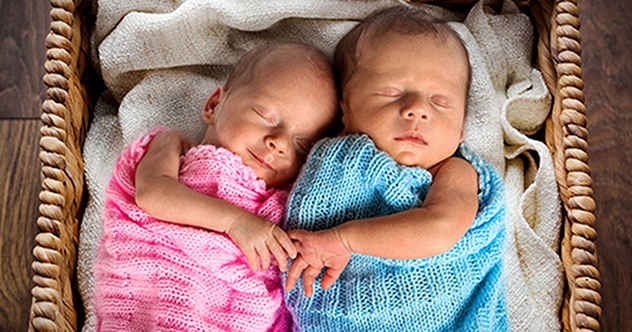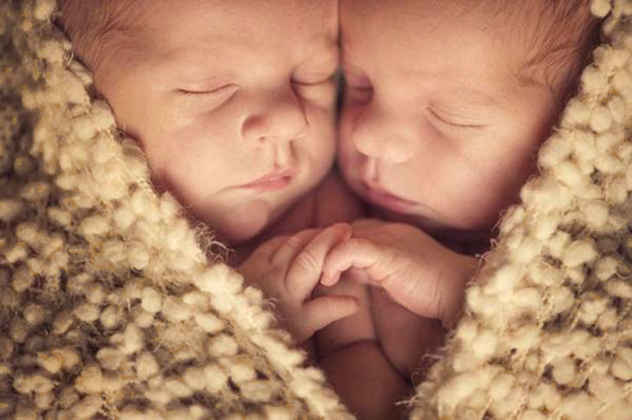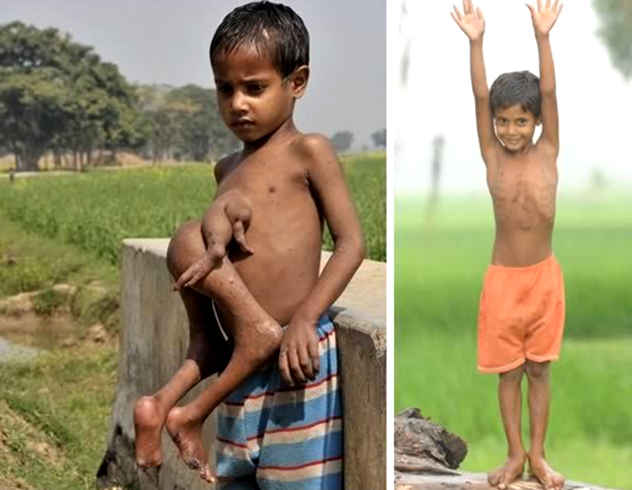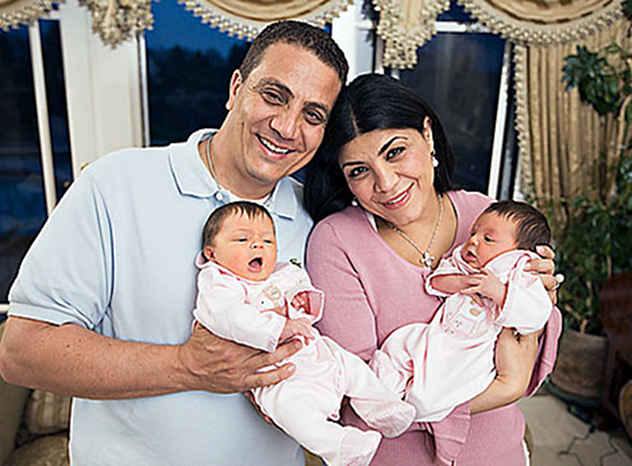 Technology
Technology  Technology
Technology  Humans
Humans 10 Everyday Human Behaviors That Are Actually Survival Instincts
 Animals
Animals 10 Animals That Humiliated and Harmed Historical Leaders
 History
History 10 Most Influential Protests in Modern History
 Creepy
Creepy 10 More Representations of Death from Myth, Legend, and Folktale
 Technology
Technology 10 Scientific Breakthroughs of 2025 That’ll Change Everything
 Our World
Our World 10 Ways Icelandic Culture Makes Other Countries Look Boring
 Misconceptions
Misconceptions 10 Common Misconceptions About the Victorian Era
 Mysteries
Mysteries 10 Strange Unexplained Mysteries of 2025
 Miscellaneous
Miscellaneous 10 of History’s Most Bell-Ringing Finishing Moves
 Technology
Technology Top 10 Everyday Tech Buzzwords That Hide a Darker Past
 Humans
Humans 10 Everyday Human Behaviors That Are Actually Survival Instincts
 Animals
Animals 10 Animals That Humiliated and Harmed Historical Leaders
Who's Behind Listverse?

Jamie Frater
Head Editor
Jamie founded Listverse due to an insatiable desire to share fascinating, obscure, and bizarre facts. He has been a guest speaker on numerous national radio and television stations and is a five time published author.
More About Us History
History 10 Most Influential Protests in Modern History
 Creepy
Creepy 10 More Representations of Death from Myth, Legend, and Folktale
 Technology
Technology 10 Scientific Breakthroughs of 2025 That’ll Change Everything
 Our World
Our World 10 Ways Icelandic Culture Makes Other Countries Look Boring
 Misconceptions
Misconceptions 10 Common Misconceptions About the Victorian Era
 Mysteries
Mysteries 10 Strange Unexplained Mysteries of 2025
 Miscellaneous
Miscellaneous 10 of History’s Most Bell-Ringing Finishing Moves
Top 10 Bizarre And Rare Types Of Twins
When the question, “Are they twins?” is answered with a yes, you can pretty much guarantee that the next question will be, “Fraternal or identical?” We like to place people into categories, and there is no easier way to do that than by keeping it to as few options as possible. But the real world is a much more complex place, and when it comes to twins, there are many more options than simply A or B.
10Superfetation

The purpose of a woman’s reproductive cycle is quite simple: to get pregnant. So, when that goal has been achieved, the body stops dropping eggs and shifts its attention to nurturing the fetus. This usually happens within ten days of getting pregnant, meaning that unless multiple eggs were dropped, you are probably as pregnant as you are going to get. Probably.
Superfetation is the phenomenon of a woman getting pregnant when she is already pregnant. With only ten recorded cases of superfetation in human history, to describe it as rare would be an understatement. What makes superfetation so rare is that it requires the body to “malfunction” in two very specific ways. Firstly, the uterus has to remain open for longer than the usual ten days in order to allow a second egg in.[1] On top of that, the second egg must drop much sooner than expected. It is usually one egg every 28 days, but this can vary. Even if both of these things do happen, the woman still has to go through all the usual motions of getting pregnant.
The biggest risk with superfetation is that the second baby will be born prematurely when the mother goes into labor with the first child, but since the children are conceived within weeks of each other, this is not a major issue. In fact, the likelihood is that this has happened more than we realize, but that the parents simply assume the twins are not identical.
9Heteropaternal Superfecundation

Heteropaternal Superfecundation is a rare type of twins, not so much because of the genetic factors involved, but because of the mating habits of humans. This occurs when a woman has dropped two eggs, which are then fertilized by different men.[2] Needless to say, it is usually, if not always, unintentional, such as in this case we previously examined, but it would be much more common if we were less monogamous as a species.
Heteropaternal Superfecundation is actually quite common in other species, such as cats, where the mother simply wants to have as many babies as she can. Taking as many partners as possible will maximize the chances that any eggs dropped will be fertilized, and if dad is not hanging around to help anyway, it doesn’t really matter who the father is. This explains why a litter of cats can vary so much in patterns and color, and also contributes to the fact that inbreeding between animals is less of a risk, as there is a greater genetic variance between relatives than in humans.
8Turner Twins

The sex of identical twins is as random as it would be with any normal pregnancy. During conception an X or Y chromosome from the sperm fuses with the X chromosome from the egg, producing either XY (male) or XX (female). So when an egg is fertilized, the sex is determined immediately, and the egg later splits up into two children of the same sex.
However, an unrelated medical condition can cause identical twins to be born different sexes. Mosaic Turner Syndrome is when a developing fetus loses its second chromosome early on in development due to genetic abnormalities. Such people are classified as X0, and since there is no Y chromosome there to make them male, they end up female. When born, the twins will simply look like opposite-sex fraternal twins, although women with Turner Syndrome will have developmental and reproductive issues as she grows, meaning the phenomenon is usually identified eventually. Touchingly, the fact that there is another fetus in the womb gives the one with MTS a better chance of survival.[3]
7Semi-Identical Twins

Identical twins form when a sperm penetrates an egg, and in the early stages of development, the egg splits in two. Since it was the same sperm and the same egg, the result is that their genetic makeup is identical. Although different sperm can carry different genetic information, once an egg has been fertilized, it cannot be fertilized a second time. But what if two sperm managed to break their way into the egg at literally the exact same moment?
This is known as semi-identical twinning, and it was first documented in 2007.[4] This case first came to the doctor’s attention when it was discovered that one-half of a pair of twins was a hermaphrodite. Upon closer inspection, it transpired that two sperm from the same man had penetrated the one egg simultaneously, in the most literal sense of the word. This usually results in an unsuccessful pregnancy, although there have been cases where these fetuses have been carried to term. In the 2007 case, however, things went a step further, and the egg split in two. This resulted in each twin getting a little bit of genetics from each sperm, making them half-fraternal and half-identical.
6Polar Body Twins

Also known as half-identical twins, polar body twins are a theoretical form of twins that have never actually been documented by science.[5] However, there really is nothing preventing this from occurring; it would just require constant observation during conception to confirm.
The theory states that polar body twins form when an egg drops and then splits in two. The smaller of the two new eggs is referred to as the polar body, which rarely survives due to a lack of cytoplasm, which is every part of a cell excluding the nucleus. There is no reason a polar body could not be fertilized and carried to term; it would just be more of a struggle as there is less material to work with. If both the primary and polar body were fertilized, the result would be half-identical twins, which would share 75 percent of their genetics, as opposed to the usual 50 percent seen in fraternal twins.
5Mirror-Image Twins

Mirror-Image twins are without a doubt the most common type of rare twins, with an estimated 1 in 4 pairs of identical twins being classed as such. They are also considerably easier to spot than many of the other entries on this list, so much so that it would be near impossible not to notice if you met a pair.
As you may have guessed, mirror-image twins are those who are opposites of each other.[6] One is left-handed, the other, right; their hair will swirl in the opposite direction; even genetic physical defects will appear on opposite sides. This occurs when the egg splits between the 7 and 12 day mark. Any later, and the twins would likely be conjoined. Any earlier, and they would just be boring old identical twins.
4Mixed Chromosome Twins
Mixed chromosome twins are rare, but the truth is, we don’t really know how rare. This is because, unlike most twins, there is only one baby at the end of the journey. So how can they be a twin? Well, we know that identical twins occur when a fertilized egg splits in two, but what if this process were reversed, and two fertilized eggs merged? Then we would get mixed chromosome twins, otherwise known as chimeras.
Chimeras can form in a few ways, such as a viable embryo absorbing one that fails. In the case of mixed chromosome twins, they start out as a set of fraternal twins, but early on in the pregnancy, the two fertilized eggs merge into one, resulting in a person with two distinct sets of DNA. This is often unnoticeable without extensive DNA testing. Other times, chimeras will have very distinct features, such as chequered skin with different tones. The different sets of DNA, which can even be different sexes, will be located in various parts of the body, so a test from your blood could turn up different results to a swab from your mouth. Two women in the US almost lost custody of their children after failing DNA tests,[7] with the most recent woman, Lydia Fairchild, being dubbed “her own twin.”
3Parasitic Twins

Parasitic twins are a form of conjoined twins, which occur when a fertilized egg fails to split properly. Unlike conjoined twins, where two distinct people with separate sets of consciousness are joined together, a parasitic twin is smaller, not fully formed, and is not a conscious being.[8]
Parasitic twins can develop anywhere on the body and can come in a variety of forms, from a small, indistinct lump, to a second (defunct) head, and even extra limbs growing out of different parts of the body. In some cases, removing the parasite can be quite straightforward, while in others, attempting to do so could be life-threatening or simply impossible.
2Biracial Twins

Biracial twins, meaning twins that are each a different race as opposed to both being mixed-race, can happen in three ways. The first is when two parents of different ethnicities have fraternal twins, which we have discussed before. Quite simply, one twin takes after the father, while the other takes after the mother. The second is Heteropaternal Superfecundation, where at least two of the parents are different races. For example, if a white woman was with an Asian man and a white man, one baby will definitely be white, while the other could appear white, Asian, or mixed-race.
The third way it can occur is if two mixed-race people have fraternal twins, which is how a pair of twin girls in the UK were born different ethnicities.[9] In that case, two half-white, half-black parents had a set of twins, with one picking up all the white features, and the other picking up the black features. This is another example of something that would not be too uncommon if our mating habits were different. With more and more interracial relationships occurring these days, instances of biracial fraternal twins will inevitably become increasingly more common as time goes on, as each child’s genetic makeup is essentially a roll of the die completely unrelated to the egg floating next to it.
1Heteromaternal Twins

We have established that twins can have different fathers, but it turns out they can technically have different mothers too. There has only been one instance of this, in 2007, and it really was the mother of all coincidences. After struggling for 12 years to conceive a second child, the Bernabas decided to undergo both IVF and surrogacy. Against all odds, the fertilized eggs took hold in both women, meaning that Mrs. Bernaba and her surrogate, Ms. Keay, were each carrying one-half of a pair of fraternal twins.[10]
Even more shocking is the fact that when Mrs. Bernaba delivered her child by C-section on May 27, her husband was told not to get too comfortable with baby Lauren just yet, as Ms. Keay had gone into labor in the next room. Soon after, still on the same day, baby Hannah was delivered. While this remains the only case of its kind so far, the increasing popularity and variety of fertility treatments, such as three-parent children, means nobody can say for sure what the future will consider normal.
Simon has no twin, but he has a Twitter @simongireland
Read more about twins on 10 Extraordinary Tales of Extraordinary Twins and 10 Terrible Tales Of Murderous Identical Twins.








